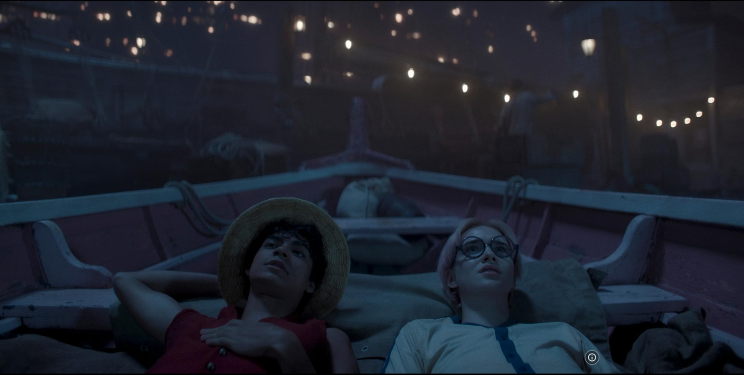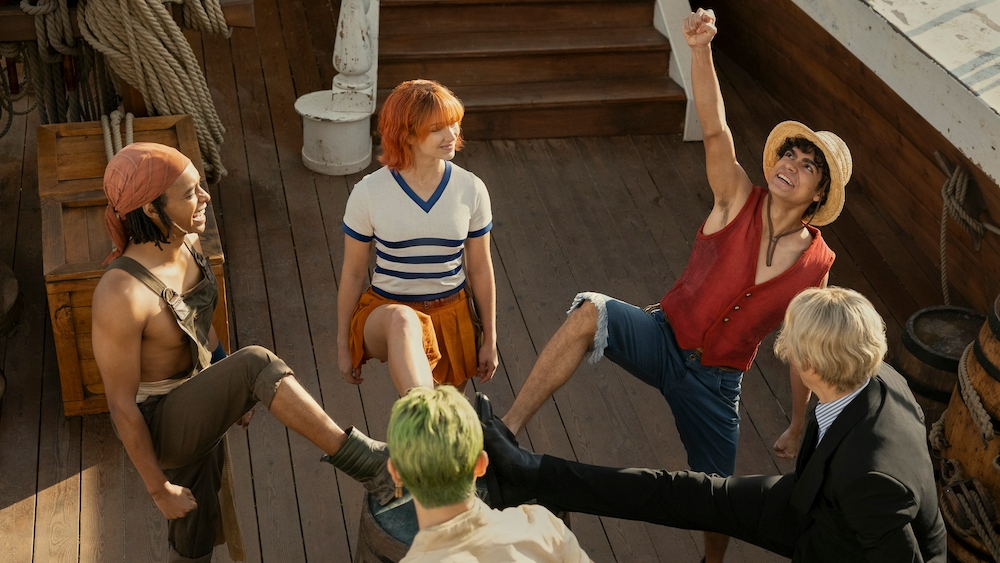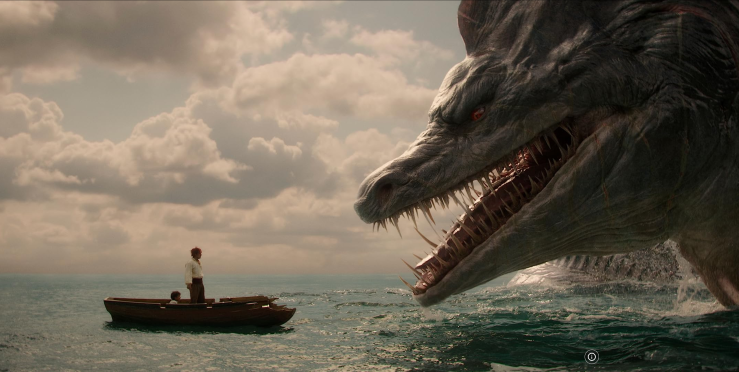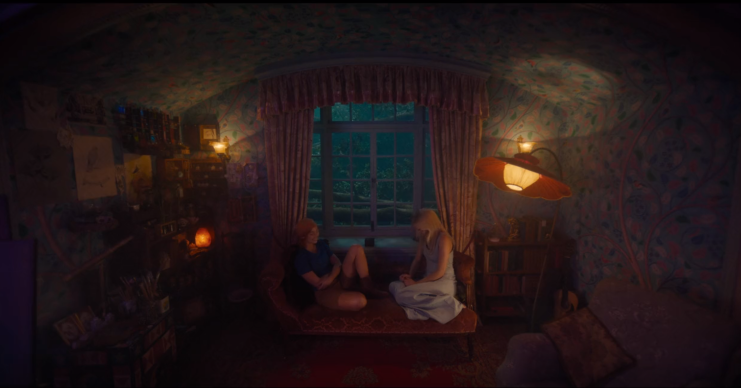Say everything you want about Netflix, but every once in a blue moon, they deliver, and this year’s deliverance might be their live-action adaptation of One Piece.
One Piece is one of the longest-running animes and a valuable franchise (numbering up to 1074 episodes as of the time of writing).
Variety Magazine reports an interview with Eiichiro Oda, the creator of One Piece, where Netflix says they want to rewrite the history of live-action adaptations. The streaming giant has never been good with adapting animated works to live-action. Death Note and Cowboy Bebop are just two of their numerous failures. But with One Piece, they delivered something incredible. The live-action adaptation of One Piece has been watched 18.5 million times in its first week. This is proof that we have finally cracked the code to live action.
This 8-episode One Piece season works with a remarkably lovable cast whose performances have redeemed Netflix’s live-action animation rep.
So, let us talk about why.
Story
If the roars of fans at Anime cons are anything to buy, you should know the plot of One Piece by now. But for those taking a first look at Oda’s masterpiece, here is a synopsis.
The greatest pirate, Gol D. Roger, reveals on his execution that all he has ever gathered, wealth and riches, he left them at the One Piece, and this kickstarts a new age of piracy as everyone starts their search for fulfillment in Gol D. Roger’s treasure. Enter Luffy, a 17-year-old who searches for One Piece to become King of the Pirates, and the Anime tells a story of his adventures from the seas of East Blue to the New World on the Grand Line.
Season 1 of the live-action only covers his adventures on East Blue until he heads to the Grand Line.
The live-action twists the story and works in its favour, allowing it to stand in its own right as a magnificent adaptation rather than a poor imitation.

In the beginning, we see Luffy leave his leaky boat and jump into a barrel to avoid sinking. The barrel floats into two fighting ships, and it is carried aboard Alvida’s ship and meets Coby, unlike the Anime that starts on Alvida’s ship without explaining how Luffy got there. The live-action also deviates in that Luffy meets Nami on Shells instead of Orange Island as in the Anime. We are also treated to an under-the-hood of the Garp-Coby-Helmeppo storyline, which was brought forward from its original place in the timeline. This is a considerable deviation from the narrative construct of the Anime. However, it was more than welcome, as it kept viewers more engaged and allowed fans who had seen the source material to appreciate the depth of character created for Coby and Helmeppo.
These little deviations kept the watch refreshing without crippling the story. The emotional highs were felt (sometimes even more than in the Anime), and the character motivations have never been more apparent. If anything, the script reinventing itself in every arc reveals one of the biggest secrets of making a successful live action: Change what you want to change but keep the character’s internal motivations constant.
Characters

One of the fears any One Piece fans would have is that the playful energy Oda’s art style lends to the manga and anime would hardly translate to the live screen. One Piece is high fantasy. Some creatures are the size of buildings, and characters have fish parts attached to their bodies.
Netflix’s live-action does a great job translating the character qualities that make One Piece lovable onto the live screen. And it is a credit to the faithful performances of the actors.
There is no bad performance amongst the cast. Inaki Godoy, who plays Luffy, looked to be having the time of his life when the straw hat was on his curly hair. Mackenyu’s stellar Zorro performance brought a newfound appreciation for the napping swordsman. Emily Rudd prints Nami’s level-headedness onscreen (typically blunted for laughs in the Anime). And we delve more deeply into Kaya’s strength of character as played by Celeste Loots.
Some of the strongest performances came from the villains. Jeff Ward has cemented himself as one of the live-action greats for his performance as Buggy the Clown. Even when it was just his head in the scene, he brought a manic energy that could rival, if not surpass, Nicholson’s performance as the Joker in Batman Begins. McKinley Belcher III played an Arlong, whose look must have been cosmetically impossible to recreate, that drew sympathy without blunting the threat he poses. This is extremely smooth, as he was the last villain before the Grand Line. I could go on and on, but I may end up naming every character.
Visuals

The eight episodes were a visual treat, and the CGI was careful not to overdo it. Luffy’s stretchy arms seemed like the most normal thing. The fact that he was calling out his movies was also consistent with his character. The costumes looked magnificent. The 8-episode run featured most of the looks we had seen in the Anime. This was a treat to long-time watchers of the anime, and we would see an uptick in the quality of One Piece cosplays at the next anime convention.
The warm orange-ish color grade works in favour of the film’s general mood and highlights the colourful world of One Piece. A lot of the action happened within close spaces as the series’ creative direction centered itself on the story’s emotional weight instead of the universe’s vistas—another intelligent choice. One Piece has many large fights, but if the same scene could be shot under a roof and tell the same story, why not? These changes did not take away from the story at all.
Themes

Another lesson more live-action adaptations can learn from Netflix’s adaptation of One Piece is the shift in dialogue from Anime to live screen. Themes that were understated in the Anime (because it was made for kids) gained clearer mentions in the live-action. Nami discussing femininity with Kaya was a scene that nobody knew was needed. Seeing one-half of the female cast on-screen having a tete-a-tete grounded the story further as a force of its own.
Arlong, positioned as a sympathetic villain, was also a welcome addition. He has a point; viewers would find themselves saying and may even root for him for a few seconds.
While the One Piece anime explores political issues quickly, the live-action leaves quotables that show the audience that the characters understand the politico-social climate in which they exist.
‘Girls can beat boys. But women cannot beat men.’ Kuina says to Zoro after their fight. This is a quote that will never leave my mind.
A well-earned debut and more to come
If this were understated before, I would like to state again that the biggest strength of the live-action is in the emotional storytelling and the way it leaves you feeling more somber and clear-headed about the characters and world of One Piece. Anime always has that giddy quality about it. The color art style and the comedy are always unmatched, but when it comes to emotions, nothing does it better than live-action. The adaptation makes the characters of One Piece as natural to us as any film on a live screen can be, taking us closer to the source material in ways that the original medium wouldn’t. There is more to say, but I won’t spoil everything for you.
Does it deserve a Season 2? Sure. And it would be interesting to see the strategies employed to tell the story of the Straw Hat’s Adventures on the Grand Line.

It is a solid watch and a rewatch. You should drop whatever you are doing and check it out.
Stream One Piece on Netflix.



